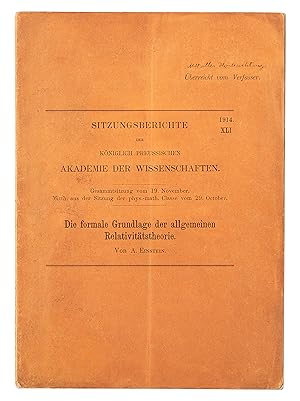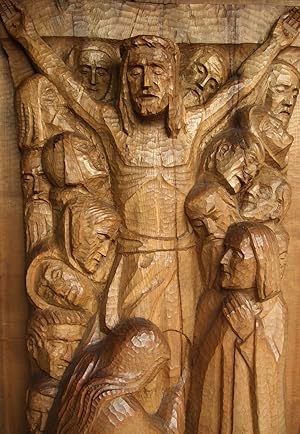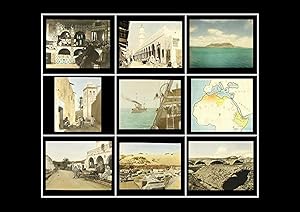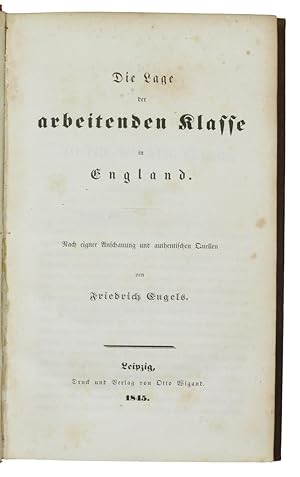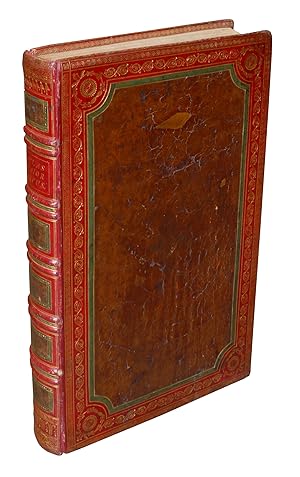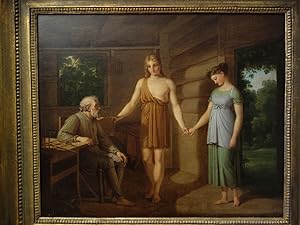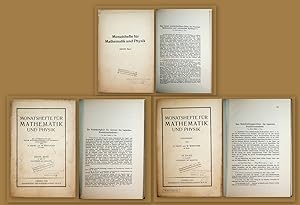die (Mehr als 3.680.000 Ergebnisse)
Produktart
- Alle Produktarten
- Bücher (3.532.567)
- Magazine & Zeitschriften (10.267)
- Comics (4.662)
- Noten (4.347)
- Kunst, Grafik & Poster (34.912)
- Fotografien (6.419)
- Karten (2.039)
-
Manuskripte &
Papierantiquitäten (92.106)
Zustand
Einband
Weitere Eigenschaften
Gratisversand
Land des Verkäufers
Verkäuferbewertung
-
Illustrirte Zeitung Leipzig Nr.5037 vom Mai 1944, mitsamt dem Gemäldezyklus "Die 4 Tageszeiten" von Willy Kriegel: 4 Originale, in kleinerer Fassung 1943 ff
Verlag: Leipzig, J.J.Weber Verlag,, 1944
Anbieter: Galerie für gegenständliche Kunst, Kirchheim unter Teck, Deutschland
Buch Erstausgabe
(noch zu Nr.12336:) - "Willy Kriegel und seine Tageszeiten", vierseitiger Bildbericht von Dr.Kurt Karl Eberlein, mit Fotoaufnahme "Professor Willy Kriegel im Atelier bei der Arbeit am "Tageszeitenzyklus", zwei ganzseitigen Farbwiedergaben "Abend" und "Nacht", Schwarzwald-Landschaften aus dem "Tageszeiten-Zyklus" von Willy Kriegel, Große Deutsche Kunstausstellung München 1943" und drei weiteren Wiedergaben von Kriegel schen Zeichnungen: " München, das durch seine großen Kunstausstellungen wieder nach des Führers Willen der zur Stadt der deutschen Kunst wurde, hat auch dem deutschen Volke den Dresdner Künstler bekannt gemacht, den die Kunstkenner längst beachteten und kannten. Ein Bilderzyklus der "Vier Jahreszeiten" auf der Großen Deutschen Kunstausstellung1943 war der große Erfolg des sächsischen Meisters. Der Künstler, der im Kriege in einen stillen, hoch gelegenen Haus am Schluchsee im badischen Schwarzwald sein Heim gefunden hatte, hat in den vier leuchtenden Landschaften "Morgen", "Mittag", "Abend" und "Nacht" die badische Schwarzwaldlandschaft, die durch Hans Thoma und andere badische Maler in die deutsche Kunst eingegangen war, in vier Gedichte verwandelt. Die vier Symphonien in Grün, Blau, Rosa, Silber, ganz von dem Lichtglanz des Himmels erfüllt, vier Sätze eines Schwarzwaldmotivs, das Schluchsee heißt, klingen vor uns diese badischen Landschaften auf, Gleichnisse des Tages, des Lichtes, der Seele, des Lebens, voll von jenem höheren Frieden, den nur die Gottnatur den Schauenden, Fühlenden, Dankenden schenkt. Man beachte, wie nordisch Prof.Kriegel die Blickbühne baut, wie er den Höhenraum sucht - im Gegensatz zum Alemannen, der den ostisch geschlossen Tiefenraum des See- und Waldwinkels bevorzugt - wie er alles dem Lichterlebnis unterordnet, das den Farbbau bestimmt. Vor allem aber beglückt es, wie in Willy Kriegels Werk die Klein- und Feinwelt der Natur zur Kunstwelt des Bildes geworden ist, die für den Maler wie für den Beschauer doch immer das Letzte und Höchste sein wird." - / Bildchronik des Monats (insgesamt elf Fotoabbildungen, u.a.: "Arbeiter und Arbeiterinnen eines lettischen Betriebes bei einem Betriebsappell; sie hören aufmerksam den Ausführungen des ersten Ritterkreuzträgers der lettischen SS-Freiwilligen-Legion, SS-Standartenführer Voldemar Veiß, zu; Generalgouverneur Dr. Frank und Professor Dr.Kümmel, der Direktor der Staatlichen Museen in Berlin, bei der Besichtigung einer kürzlich eröffneten Ausstellung in Krakau, die japanische Drucke der Malerei und der Holzschnittkunst zeigt; Karl Henkell, Betriebsführer der Sektkellerei Henkell & Co., erlag seinen während eines Bombenangriffs erlittenen Verletzungen; Professor Ernst Rüdin, ein sehr verdienstvoller Forscher auf dem Gebiet der Rassenhygiene, beging am 19. April seinen 70. Geburtstag; Generalmusikdirektor Prof.Dr. Hans Pfitzner, einer der anerkannt großen Komponisten der Gegenwart, wurde am 5. Mai 75 Jahre alt") / Wehrpolitische Chronik vom 24. März bis zum 30. April (Der Kampf im Osten, der Luftkrieg - "war schon im März die deutsche Luftwaffe gegen die britisch-nordamerikanischen Terrorangriffe äußerst erfolgreich, indem sie 1234 Feindmaschinen, in der überwiegenden Mehrzahl viermotorige Bomber, abschoß, so ist mit der Steigerung der feindlichen Lufttätigkeit im April auch eine Steigerung der deutschen Verteidigungskraft parallel gegangen; sie konnte in diesen Monat 1392 britisch-nordamerikanische Terrorflugzeuge abschießen, und zwar 1264 viermotorigeBomber und 266 Jagdflugzeuge. Dementsprechend ist auch für die britisch-nordamerikanischen Luftstreitkräfte der Ausfall an fliegendem Personal sehr hoch; er beträgt für den April allein fast 11.000 Mann. . "/ Diplomatische Nachrichten / Kulturchronik. - Später Kriegsdruck, Erstausgabe in guter Erhaltung (Einband etwas stockfleckig, sonst gut) Versand an Institutionen auch gegen Rechnung Sprache: Deutsch Gewicht in Gramm: 2000.
-
Illustrirte Zeitung Leipzig Nr.5037 Mai 1944, mitsamt dem Gemäldezyklus "Die 4 Tageszeiten" von Willy Kriegel (vier Original-Ölgemälde: kleinere Version 1943 ff; - weitere Informationen und Abbildungen auf Anfrage)
Verlag: Leipzig, J.J.Weber Verlag,, 1944
Anbieter: Galerie für gegenständliche Kunst, Kirchheim unter Teck, Deutschland
Buch
Vollständige Ausgabe im original Verlagseinband (Broschur/Kartoneinband 27 x 38 cm) mit illustriertem Deckeltitel: farbige Graphik "Maienzeit " von Alfred Seckelmann. Seiten 518-547, mit sehr vielen Abbildungen (Zeichnungen und Fotos) auf Kunstdruckpapier. - Aus dem Inhalt: Dr.H.Hartmann, Pathologie des Sauerstoffmangels / Wege zu Büchern / Ganzseitige Wiedergabe einer PK.-Zeichnung von Kriegsberichter Lothar Günther Buchheim: "Brückenwache auf einem U-Boot" / Heinz Bongartz: Deutsche Seemacht, dreiseitiger Bildbericht mit PK.-Zeichnungen von Kriegsberichter Fritz Friedel, mit folgenden Unterschriften: "Britischer Geleitszug wurde unter der englischen Kanalküste von Fernkampfbatterien unserer Kriegsmarine unter Feuer genommen; Deutsche Schnellboote führen einen Angriff auf einen britischen Geleitzug an Englands Küste durch; Ein Vorpostenboot unserer Kriegsmarine hat durch seine Flakwaffen einen vermotorigenn USA.-Bomber zum Absturz gebracht" (brennender Bomber kurz vor Aufprall auf die Wasseroberfläche, seine Besatzung daneben an Fallschirmen) / Bergkampf im Hochapennin, von NSKK.-Kriegsberichter Willi Michels, mit drei PK.-Zeichnungen von NSKK.-Kriegsberichter Fritz Bley (" durch die verschneite Bergwelt geht ein Stoßtrupp der NSKK.-Gruppe Luftwaffe gegen ein von kommunistischen Banden bedrohtes italienisches Bergdorf vor; Die Banken greifen an, wenige Sekunden später sind die Häuser des kleinen Bergdorfes von den NSKK.-Männern besetzt und die automatischen Waffen in Stellung gebracht; Der heldenmütige Kampf der NSKK.-Männer hat den Feind gebunden und die Heranführung starker deutscher Verbände ermöglicht. Deutsche Jagdflugzeuge greifen an und jagen Tod und Verderben in den Feind") / Zweiseitiger Bildbericht "Die Landschaft des Krieges - III.Die Westfront", von Kriegsberichter Dr.Wolf Strache, mit insgesamt neun Fotoabbildungen, u.a.: "Generalfeldmarschall Rommel an der bretonischen Küste" / Dreiseitiger Bildbericht "Hier scheiden sich die Geister", von Paul Renovanz (mit ganzseitiger zweifarbiger Zeichnung von PK.-Kriegsberichte Oswald Voh "Heldentum der Heimat: Männer einer Luftschutztruppe und freiwillige Helfer bei der Bergung Verschütteter nach einem feindlichen Terrorangriff auf eine deutsche Stadt. Im Lichtschein brennender Häuser sind die Retter unter Zuhilfenahme von Fackeln in den Keller des zerstörten Wohnhauses eingedrungen und befreien die Eingeschlossenen. In den noch vom Schrecken des Angriffs gezeichneten Gesichtern zeigt sich bereits wieder ein Zug stolzen Trotzes und entschlossenen Lebenswillens, der im unerschütterlichen Glauben an den deutschen Sieg wurzelt", sowie Fotoabbildung "Zerstörtes Freskobild aus der Kirche des Klosters Monte Cassino. Britisch-amerikanische Luftwaffenverbände vernichteten ohne zwingende militärischen Grund die Anlagen der weltberühmten Abtei Monte Cassino und töteten hunderte von Zivilisten, die sich in den Schutz des von deutschen Truppen unbesetzten Klosters begeben hatten, PK.-Aufnahme von KriegsberichterCzirnich,PBZ"): "Die gesittete Welt steht fassungslos einem Kriegsterror - richtiger gesagt: einer entehrenden Kriegsführung gegenüber, die in keiner Weise beschönigt, was sie frevelt. Dem mörderischen Gegner genügt es nicht, Tag und Nacht Brand und berstendes Eisen auf offene Städte zu schleudern in der Erwartung, mit solchen allem Völkerrecht hohnsprechenden Methoden die deutsche Heimatfront mürbe zu machen. Er setzt in sein verbrecherisches Kalkül als wesentlichen Faktor neben die physische Vernichtung die seelische Verödung, hervorgerufen durch Zerstörung unersetzliche Kultur werde, zu denen wir uns leidenschaftlich bekennen, für die er aber bestenfalls ein snobistisches, meist freilich nur ein materiell entartetes Händlerinteresse aufzubringen vermag . . ." - Die vier Original-Gemälde von Willy Kriegel im Preis enthalten; weitere Beschreibung s.Nr.123361! Versand an Institutionen auch gegen Rechnung Sprache: Deutsch Gewicht in Gramm: 2000.
-
An die Redaction des 'Volksstaat'". Autograph manuscript signed.
Verlag: London, 23 March 1871., 1871
Anbieter: Antiquariat INLIBRIS Gilhofer Nfg. GmbH, Vienna, A, Österreich
Manuskript / Papierantiquität
Large 8vo. 2 pp. on bifolium. On scritta stationery with printed letterhead of the "General Council of the International Working Men's Association, 256, High Holborn, London, W.C.". In German. A political article written in connection with the formation of the Paris Commune, an event which had exhilarated Marx and terrified governments throughout Europe. Composed for publication in the "Volksstaat", the official newspaper of the Social Democratic Workers Party, Marx warns against the spread of false news designed to sow confusion among Communists. - "Once again, the Gallic cock had crowed. The rulers of Europe affected deafness at first, perhaps hoping that the squawks would fade if no one took notice. When this failed, their panic was delightful to behold" (Wheen, p. 325). International papers, seizing on an item published in the reactionary "Paris-Journal", reported that even Karl Marx "was so horrified by the uprising that he had sent a stern message of rebuke to French members of the International" (ibid.) and that the French International had voted to "expel the Germans from the International Working Men s Association". Marx clarifies that "the letter, as I have already explained in The Times, is a brazen fake from beginning to end". The purpose of this calumny, he advises readers of the "Volksstaat", "is immediately obvious [ ] It is quite natural that the important dignitaries and the ruling classes of the old society who can only maintain their own power and the exploitation of the productive masses of the people by national conflicts and antagonisms, recognise their common adversary in the International Working Men s Association. All and any means are good to destroy it". - Marx signs in full as "Karl Marx, Secretary of the General Council of the International Working Men's Association for Germany". The article was published in the "Volksstaat" on 29 March 1871 and also in other newspapers of the "International", as well as in the paper "Die Zukunft". - Complete manuscripts by Karl Marx are of the utmost rarity in the trade. - Published under the original title in MEW 17, pp. 298-300, as "An die Redaktionen des 'Volksstaats' und der 'Zukunft'" in MEGA I.22, pp. 5-8 (English ed., pp. 288-290).
-
Die Ritterlich und lobwürdig reiß [.] Sagend von den landen, Egypto, Syria, von beiden Arabia Persia, India und Ethiopia, von den gestalten, sitten, und dero menschen leben und glauben.
Verlag: Strasbourg, Johann Knobloch, 1516., 1516
Anbieter: Antiquariat INLIBRIS Gilhofer Nfg. GmbH, Vienna, A, Österreich
4to. 226 pp. (A8, B-C4, D8, E-F4, G8, H-J4, K8, L-M4, N8, O-P4, Q8, R-S4, T6, V4, X7, without the final blank). With title woodcut and 47 woodcuts in the text (including 1 full-page illustration). - (Bound after) II: Giovio, Paolo. Libellus de legatione Basilii Magni principis Moschoviae ad Clementem VII. Pontificem Max. in qua situs regionis antiquis incognitus, religio gentis, mores, & causae legationis fidelissime referuntur. Basel, [J. Froben], 1527. 39, (1) pp. With woodcut printer's device to t. p. - (Bound after) III: Fabri (of Leutkirch), Johann. Ad serenissimum principem Ferdinandum Archiducem Austriae, Moscovitarum iuxta mare glaciale religio. Basel, J. Bebel, 1526. 18 ff. - (Bound after) IV: Ricoldo (da Monte di Croce). Contra sectam Mahumeticam libellus. (Georgius de Hungaria). De vita & moribus Turcorum. Carben, Victor de. Libellus de vita et moribus Iudaeorum (ed. J. Lefèvre). Paris, H. Estienne, 1511. 86 ff. With large woodcut in the text and several woodcut initials. - (Bound after) V: Ficinus, Marsilio. De religione Christiana & fidei pietate opusculum. Xenocrates de morte, eodem interprete. Strasbourg, J. Knobloch, 1507. 90 ff. With woodcut printer's device on final page. - (Bound after) VI: Haythonus (Hatto). Liber historiarum partium orientis, sive passagium terrae sanctae scriptus anno Redemptoris nostri M.CCC. Hagenau, J. Setzer, 1529. 71 ff. With woodcut title border and device on final page. Contemp. wooden boards with wide blindstamped leather spine and 2 brass clasps. The first illustrated edition (in its second issue) of one of the most famous early travel reports and the first Western encounter with the Arab world. Of the utmost rarity; not a single copy could be traced on the market for the past sixty years; not a single copy in the USA (cf. OCLC). - The "Itinerario" contains the first printed eyewitness account of any place in today's United Arab Emirates: on his return journey from Mecca (which he was the first Westerner to describe), Varthema visited Ras al-Khaimah ("Giulfar") and portrayed the city as "most excellent and abounding in everything", with "a good seaport", and whose inhabitants are "all Muslims". While Montalboddo's famous anthology of discoveries, printed in 1507, contained the first printed reference to the Arabian Gulf region, it was Varthema's work, published only three years later, that offered the first actual report from the region by a Western traveller who had visited the coast. - All early editions of Varthema s "Itinerario" are exceedingly rare (even the 2013 Hajj exhibition at the MIA, Doha, only featured the 1654 reprint; cf. below). This - the first illustrated one - is certainly the rarest of them all: international auction records list not a single copy. The 1510 editio princeps was offered for US$ 1 million at the New York Antiquarian Book Fair in April 2011. - Varthema, a gentleman adventurer and soldier from Bologna, left Venice at the end of 1502. In 1503 he reached Alexandria and ascended the Nile to Cairo, continuing to Beirut, Tripoli, Aleppo and Damascus, where, adopting Islam and taking the name of Yunas, he joined a Mameluke escort of a Hajj caravan and began the pilgrimage to Mecca. Varthema was amazed by what he observed: "Truly I never saw so many people collected in one spot as during the twenty days I remained there", he begins, and arriving at the Great Mosque, continues, "it would not be possible to describe the sweetness and the fragrances which are smelt within this temple." Thanks to his knowledge of Arabic and Islam, Varthema was able to appreciate the local culture of the places he visited. Impressed and fascinated, he describes not only rites and rituals, but also social, geographical, and day-to-day details. "I determined, personally, and with my own eyes", he declares in the prefatory dedication, "to ascertain the situation of places, the qualities of peoples [.] of Egypt, Syria, Arabia Deserta and Felix, Persia, India, and Ethiopia, remembering well that the testimony of one eye-witness is worth more than ten hear-says." His good fortune did not continue unabated, however: after embarking at Jeddah and sailing to Aden, he was denounced as a Christian spy and imprisoned. He secured his release and proceeded on an extensive tour of southwest Arabia. Stopping in Sanaa and Zebid as well as a number of smaller cities, he describes the people, the markets and trade, the kind of fruits and animals that are plentiful in the vicinity, and any historical or cultural information deemed noteworthy. Returning to Aden, and after a brief stop in Ethiopia, he set sail for India. In addition to visiting Persia, Varthema explored the coasts of Malabar and Coromandel, including a very documented stay at Calicut at the beginning of 1505. He also purports to have made extensive travels around the Malay peninsula and the Moluccas. Returning to Calicut in August 1505, he took employment with the Portuguese at Cochin and, in 1508, made his way back to Europe via the Cape of Good Hope. - First published in 1510, Varthema's account became an immediate bestseller. In addition to his fascinating account of Egypt, Syria, the Arabian Peninsula, and the holy Muslim cities, "Varthema brought into European literature an appreciation of the areas east of India [.] which it had previously not received from the sea-travelers and which confirmed by firsthand observations many of the statements made earlier by Marco Polo and the writers of antiquity" (Lach, I. i. 166). "Varthema was a real traveller. His reports on the social and political conditions of the various lands he visited are reliable as being gathered from personal contact with places and peoples. His account of the overland trade is of great value in that we are made to see it before it had begun to give way to the all-seas route. He even heard of a southern continent and of a region of intense cold and very short days, being the first European probably after Marco Polo to bri.
-
[Bird's-eye View of Amsterdam, first printed in Amsterdam in 1544, 3rd edition, 1553 or later]. Text in the cartouche in the upper right: De vermaerde koopstadt/van Amstelredam/ geconterfeyt met alle sijn Wateren/ Bruggen / Straten /Kercken /Kloo=steren/ Huysen /Toorens /Poorten ende Mueren / ende omleggende situatie /gemackt ter eeren K.M. ende oock den Eersamen Raedt der selver Stadt/ ende allen Liefhebbern der Konste/etc. Wtgegeven by Cornelis Anthonizoon Schilder/ met Octroye der K.M. onsen ghenadighsten Heere/ van't selfde niet te moghen nae-drucken noch verkoopen binnen den tijdt van ses Jaren lanck gheduerende /ende ghedateert van den Jahre duysent vijf-hondert drie-en-veertigh / op seeckere penen int selfde Octroye begrepen / op dat hem een yegelijck voor schade verhoede mach. Dese afbeeldinghe vindtmen te koop in die vermaerde koopstadt van Amstelredam achter de Nieuwe Kerck by den voorsz Cornelis Anthoniszoon, Schilder inde Schrijvende handt. CMT 1544 (The famous merchant cit
Verlag: 1544 [1553 or later]., Amsterdam,, 1544
Anbieter: Daniel Crouch Rare Books Ltd, London, Vereinigtes Königreich
Karte
The first printed plan of Amsterdam Large wall map, woodcut with handcut and letterpress lettering on twelve sheets, mounted on linen. Watermark (on several sheets): A yet unidentified foolscap with four pointed extensions and two shorter ones with bells, including an elongated staff with three balls. Not identified in Churchill, Laurentius, Voorn or Heawood. Condition: overall fine condition, untrimmed, and in loose sheets, some sheets a bit darkened in the corners, a few small areas of restoration to margins, perhaps pressed at some stage, apparently once framed (some dark lines in the margins do suggest this), very clean, printed on thin paper. The first printed plan of Amsterdam. Cornelis Anthonisz (1499-c1557) was a distinguished cartographer and painter, and official topographical artist to the Holy Roman Emperor. In 1538 he made a painting of Amsterdam, which he published in 1544, with his monogram and date visible under the letterpress text. It is a bird's eye view taken from an imaginary vantage point over the harbour, looking southwards. Anthonisz' depiction was the source for plans of the city for the next seventy years, while his original blocks remained in circulation for over 110 years; all printings are rare: no example of the original printing of 1544 can currently be located; of this third state, which differs from the second state by the removal of the "Daniel 5. Mene Tekel Phares" in the imprint, Karrow records only four institutional locations. This printing faithfully captures Amsterdam as it was in 1544, before the construction of the outer ring of canals, and celebrates the city's proud maritime heritage, the title supported by a large figure of Poseidon and the foreground dominated by all manner of shipping. The map shows the city of Amsterdam in the early decades of the sixteenth century, facing south, before the construction of the semi-circular ring of canals. It is bordered by the IJ, the Singel, a stretch of river Amstel, in the west and the Kloveniersburgwal and Gelderse Kade in the east. The waterway in the middle is labelled here "Den Amstel" in the South and "Damrack" in the North. The map as such does not only give an impressive view of the topography of the city and its canals and buildings, but it abounds in detail to represent a thriving commercial hub that owes its tremendous wealth to merchants and seafarers, as can be concluded from the number of ships approaching and leaving the port and canals. It is certainly not by accident that this map resembles the famous bird's-eye view of Venice, composed in 1500 by Jacopo de Barbari. The angle at which Amsterdam is shown, the waters and canals dividing the urban districts from each other, and also including an ancient Roman deity such as Neptune, the god of the waters, all imply that Cornelis was familiar with this incredible example of Renaissance printmaking. In any case, it must have suited the commissioners of the original painting, the council of Amsterdam to present their flourishing city as Venice of the North to Charles V and also to those who could afford a print of the map to express their local pride. Cornelis Anthoniszoon's map became famous and very popular soon after it was first published in 1544, so that it continued to be printed in, probably, six editions until the seventeenth century. So far, no example of the first edition is known. We only know of the first edition from an account given by Johann David Passavant in the third part of his book Le Peintre-graveur (1862), where he describes a copy from the private collection of professor Joseph Martin von Reider (1793-1862) in Bamberg/Germany. This map was already untraceable for A.E. d'Ailly in 1934, when he compiled his Catalogus van Amsterdamsche Plattegronden, and it turns out that von Reider's collection was dispersed already from 1858, when von Reider donated major parts of it to the Bavarian state. Today, neither the Staatliche Graphische Sammlung nor the Bayerisches Nationalmuseum in Munich can trace this map in their collections, although they had acquired major parts of von Reider's print collection in 1920. It is possible that it must be counted among the losses of WW2. Subsequent editions can be distinguished from earlier ones by the number of wormholes in the woodblocks, but, above all, from the modified texts in the cartouche in the upper right. Spellings were reviewed already for the second edition, and in how far the third edition differed from the second, is not yet clearly established. However, d'Ailly assumed in 1936, that "Ian Iansz" who is mentioned as printer on the fourth edition, only added his name to the text of the cartouche, after he had taken over unsold prints of the third edition from Cornelis Anthoniszoon's widow. The sixth edition was printed by Manuel Colijn, probably between 1636-1664. The date of 1544, when the map was first printed, remains prominent in all editions, probably to pay tribute to its inventor, who is mentioned in the cartouche throughout. "Cornelis is celebrated for is talents as painter, draftsman and printmaker. Yet indivisible from these practices was the Amsterdam-born artist's longtime preoccupation with mapmaking. Trained by his father in the art of engraving, Cornelis was the first printmaker to utilize that medium to chart the seas, at the time the primary conduit for trade in the Dutch Republic. In 1543 he published the Caerte van Oostland, a handbook based on both personal observations and reports from sailors that mapped the sailing route from Amsterdam to the Baltic, and which discussed the instruments and methods for surveying uncharted waters. During the time he was compiling the Caerte, Cornelis undertook the parallel project of documenting the territory contained within the Dutch borders, and in particular his native city of Amsterdam. A series of pen-and-ink studies - each a small-scale meditation on the topography of Amsterdam - culminated in 1538 in a monumental painted.
-
Die Staffler von Sillian
Verlag: Universitätsverlag Wagner, Innsbruck, 1992
ISBN 10: 3703002514ISBN 13: 9783703002519
Anbieter: DI Barbara Oswald, Wien, Österreich
Buch
Eine Familie aus Ritten in Tirol, die sich zwischen Bauerntum und Bürgerlichkeit bewegte. 316 S. Schlern-Schriften 291 Hardcover Gebrauchsspuren 1992 Geringe Gebrauchsspuren 21.
-
KAGENECK,A.V. DIE BAMBERGER
Anbieter: Antiquariat Klittich-Pfankuch GmbH + Co., Braunschweig, Deutschland
Regimentsgeschichte. Kageneck, August v. Die Bamberger Reiter. Porträt eines außergewöhnlichen Reiterregiments. Unter Mitarbeit des Vorsitzenden der Kameradschaftlichen Vereinigung der Offiziere des ehem. Reiter- und Kavallerie - Regiments Nr. 17, Bamberg Franz Graf du Moulin Eckart. Geleitwort von Herzog Albrecht von Bayern. München, Langen Müller, ca. 1992. 4°. Mit vielen Textabbildungen. 178 Seiten, 15 Bll. Originaler Pappband mit Schutzumschlag.
-
Die Abenteuer von den sieben Schwaben. Mit 10 Bildern.
Verlag: Mit einer schwungvollen" Widmung auf dem Vorsatz Gut erhalten"
Anbieter: Versandantiquariat Alraune, Dachau, Deutschland
"O Kart., 8°, 61 (3) S. Mit einer längeren Widmung auf dem Vorsatz.Gut erhalten. Sprache: 250.
-
Die Ritterlich und lobwürdig reiß [.] Sagend von den landen, Egypto, Syria, von beiden Arabia Persia, India und Ethiopia, von den gestalten, sitten, und dero menschen leben und glauben.
Verlag: Strasbourg, Johann Knobloch, 1516., 1516
Anbieter: Antiquariat INLIBRIS Gilhofer Nfg. GmbH, Vienna, A, Österreich
4to. 226 pp., final blank f. With title woodcut and 47 woodcuts in the text (including 1 full-page illustration). Blindstamped dark blue morocco by Riviere & Son with giltstamped spine title. All edges gilt. Marbled endpapers. The first illustrated edition (in its second issue) of one of the most famous early travel reports and the first western encounter with the Arab world. Of the utmost rarity; not a single copy could be traced on the market for the past sixty years; not a single copy in the USA (cf. OCLC). Lodovico de Varthema s "Itinerario" contains the first printed eyewitness account of any place in today's United Arab Emirates: on his return journey from Mecca (which he was the first Westerner to describe), Varthema visited Ras al-Khaimah ("Giulfar") and portrayed the city as "most excellent and abounding in everything", with "a good seaport", and whose inhabitants are "all Muslims". While Montalboddo's famous anthology of discoveries, printed in 1507, contained the first printed reference to the Arabian Gulf region, it was Varthema's work, published only three years later, that offered the first actual report from the region by a Western traveller who had visited the coast. All early editions of Varthema s "Itinerario" are exceedingly rare (even the 2013 Hajj exhibition at the MIA, Doha, only featured the 1654 reprint; cf. below). This - the first illustrated one - is certainly the rarest of them all: international auction records list not a single copy. The 1510 editio princeps was offered for US$ 1 million at the New York Antiquarian Book Fair in April 2011. - Varthema, a gentleman adventurer and soldier from Bologna, left Venice at the end of 1502. In 1503 he reached Alexandria and ascended the Nile to Cairo, continuing to Beirut, Tripoli, Aleppo and Damascus, where, adopting Islam and taking the name of Yunas, he joined a Mameluke escort of a Hajj caravan and began the pilgrimage to Mecca. Varthema was amazed by what he observed: "Truly I never saw so many people collected in one spot as during the twenty days I remained there", he begins, and arriving at the Great Mosque, continues, "it would not be possible to describe the sweetness and the fragrances which are smelt within this temple." Thanks to his knowledge of Arabic and Islam, Varthema was able to appreciate the local culture of the places he visited. Impressed and fascinated, he describes not only rites and rituals, but also social, geographical, and day-to-day details. "I determined, personally, and with my own eyes", he declares in the prefatory dedication, "to ascertain the situation of places, the qualities of peoples [.] of Egypt, Syria, Arabia Deserta and Felix, Persia, India, and Ethiopia, remembering well that the testimony of one eye-witness is worth more than ten hear-says." His good fortune did not continue unabated, however: after embarking at Jeddah and sailing to Aden, he was denounced as a Christian spy and imprisoned. He secured his release and proceeded on an extensive tour of southwest Arabia. Stopping in Sanaa and Zebid as well as a number of smaller cities, he describes the people, the markets and trade, the kind of fruits and animals that are plentiful in the vicinity, and any historical or cultural information deemed noteworthy. Returning to Aden, and after a brief stop in Ethiopia, he set sail for India. In addition to visiting Persia, Varthema explored the coasts of Malabar and Coromandel, including a very documented stay at Calicut at the beginning of 1505. He also purports to have made extensive travels around the Malay peninsula and the Moluccas. Returning to Calicut in August 1505, he took employment with the Portuguese at Cochin and, in 1508, made his way back to Europe via the Cape of Good Hope. - First published in 1510, Varthema's account became an immediate bestseller. In addition to his fascinating account of Egypt, Syria, the Arabian Peninsula, and the holy Muslim cities, "Varthema brought into European literature an appreciation of the areas east of India [.] which it had previously not received from the sea-travelers and which confirmed by firsthand observations many of the statements made earlier by Marco Polo and the writers of antiquity" (Lach, I. i. 166). "Varthema was a real traveller. His reports on the social and political conditions of the various lands he visited are reliable as being gathered from personal contact with places and peoples. His account of the overland trade is of great value in that we are made to see it before it had begun to give way to the all-seas route. He even heard of a southern continent and of a region of intense cold and very short days, being the first European probably after Marco Polo to bring back the rumor of Terra Australis" (Cox I, 260). - A few contemporary underlinings and marginalie. Some slight browning and staining as usual; stamp of the Dukes of Saxe-Meiningen on the reverse of the title. - VD 16, ZV 15157. BM-STC 66. IA 113.543 (includes copies in BSB Munich and Wolfenbüttel). Benzing (Strasbourg) 100. Schmidt (Knobloch) 132. Ritter (IV) 932 & 2000. Muller 132, 170. Kristeller 383. Paulitschke 296. Ibrahim-Hilmy II, 305. Röhricht 574. Cf. exhibition cat. "Hajj - The Journey Through Art" (Doha, 2013), p. 90 (1655 Dutch ed. only). Macro, Bibliography of the Arabian Peninsula, 2239 (other editions only).
-
Wichtiges, bislang unpubliziertes, Tagebuch des deutschen Biologen Willemoes-Suhm von der Reise der HMS Challenger um die Erde 1872-1875. 2 Bände.
Anbieter: Antiquariat Kainbacher, Baden bei Wien, Österreich
an Bord der HMS Challenger 1872-1875. 4to. Band 1: 378 S., Band 2: 98 S. Mit zahlreichen Skizzen und Plänen im Text. Halblederbände der Zeit, in neuer Lederbox. Sehr gut leserliche Handschrift meist in deutscher Sprache. Original-Tagebuch des deutschen Biologen von der Reise der HMS Challenger. Gestorben auf Tahiti. Die letzten Eintragungen des Biologen stammen vom 2.September 1875 auf Hilo (Hawaii). Die Reise führte weiter Richtung Tahiti, unterwegs, am 13.September 1875 starb Willemoes-Suhm. Sein Tagebuch ist eine Fundgrube an Reisenotizen und wissenschaftlichen, sowohl zoologischen, als auch botanischen, Eintragungen. Unterteilt ist sein Tagebuch nach den Stationen, u.a. Azoren, St. Paul, Tristan-Inseln, Pince Edwards Islands, Crozet-Insel, Kerguelen, Antarktis, Australien, Neuseeland, Tonga, Fiji, Ovalau, Api, Neue Hebriden, Arafui, Ari, Ke Dulan, Ternate, Lamboanga, Manilla, Cebri, Humboldt-Bai ? Neu-Guinea, Yeddo, Yokohama, Hiogo. Yokohama ? Sandwich-Inseln, Honolulu, Hilo. 1872-1875. Important manuscript by one of the leading naturalists on the voyage. Original scientific travel journal titled ?Challenger? Rudolph von Willemoes Suhm ?Journal No.? ?I (& II).? Scientific Travel Journal of the German Explorer and Zoologists aboard HMS Challenger. Text in German but occasionally in English. 2 Vols. 21 Dec. 1872-6. Sept. 1875. 4to, 378; 98 pp., illustrated with sketches and 1 photograph, original half calf, fitted half morocco case. Autograph journal kept by the German naturalist Rudolf v. Willemoes-Suhm during his 3-year journey with the Challenger. Suhm was mainly concerned with Crustaceans, and several new species were named by him. His journal covers the entire voyage until his tragic death from erysipelas on 13th September,1875, while the ship was at Tahiti in the Pacific. His travel report remains unpublished and is a leading, yet apparently untapped source on the history of the Challenger Expedition as well as research and discovery of the sea. Suhm, born on 11. September 1847 in Glückstadt on the Elbe River studied in Bonn, Munich and Göttingen already at the age of 24 years he was a Professor of Zoology at the University of Munich. in 1872 he was appointed by Sir Charles Wyville Thomson, the Scientific Director of the Challenger Expedition as the only German on the staff of the research carried out on behalf of the Royal Society. The posthumous journal covers the entire period from Suhms trip to a few days before his death, in which his illness forced him to stop writing. It contains a wealth of information, particularly the geographical and zoological research of the ?Challenger? Suhm illustrated his records with small designs, including many maps and some small Zoological representations. Die britische Challenger-Expedition (1872-1876) war die erste rein wissenschaftliche Forschungsreise. Das Expeditionsschiff HMS Challenger legte bei Ihrer Reise ca. 130.000 km zurück und durchzog damit beinahe das gesamte Weltmeer. Mit dieser Expedition wurde der Grundstein für die Ozeanographie gelegt. Wichtige Forschungsstationen waren die Bahamas, die Marion-Inseln im südlichen Eismeer, Neuseeland, die Auckland-Inseln und Neu-Guinea. Die Ergebnisse wurden in 50 Bänden veröffentlicht.
-
In 80 Tönen um die Welt. Eine musikalisch-multikulturelle Erlebnisreise für Kinder mit Liedern, Tänzen, Spielen, Basteleien und Geschichten
Verlag: Oekotopia Verlag, 2000
ISBN 10: 3931902617ISBN 13: 9783931902612
Anbieter: Antiquariat Nam, UstId: DE164665634, Freiburg, Deutschland
Buch
Hardcover. Zustand: Wie neu. 156 S. m. zahlr. Illustr. Gebunden, neuwertig.
-
Die 100 des Jahrhunderts: Filmregisseure
Verlag: Rowohlt Tb., 1994
ISBN 10: 3499164523ISBN 13: 9783499164521
Anbieter: Antiquariat Nam, UstId: DE164665634, Freiburg, Deutschland
Buch
Softcover. Zustand: Sehr gut. 205(3) S. Tb. Sehr gut erhalten.
-
West-Indische Paskaert waer in de graden der breedde over wederzijden van de middellijn wassende so vergrooten dat die geproportioneert sijn tegen hunne nevenstaende graden de lengde. Vertonende behalve[n] Europaes zuydelijcste alle de zeekusten van Africa en America begrepen in 't Octroy bij de H.M.H. Staten Generael der vereenichde Nederl. verleent aende Generale West Indische Compagnie. Mitsgaders die van Peru en Chili inde groote Zuyd-Zee.
Verlag: Amsterdam, Pieter Goos, [ca. 1660]., 1660
Anbieter: Antiquariat INLIBRIS Gilhofer Nfg. GmbH, Vienna, A, Österreich
Printed on vellum (ca. 80 x 98 cm) from one large copperplate engraving, partly coloured by a contemporary hand. The "West-Indische Paskaert" engraved by Pieter Goos, in its rare first state, a nautical chart prepared for the Dutch West India Company (WIC) as an aid to crossing the Atlantic Ocean to the trading regions of the Americas and visiting trading posts in Africa. It shows parts of the east coast of North America, both coasts of South America, Mediterranean Europe and the west coast of Africa. Many "West-Indische Paskaerten", as these navigational charts were called, were reprinted over and over from new states of the copperplates. For more than a century Dutch and foreign seafarers profited from their use on transatlantic journeys. The great cartographer Willem Jansz. Blaeu (1571-1638) published the first "West-Indische Paskaert" around 1630 using manuscript charts and other documents of the Atlantic and its coasts, including information provided by the Dutch WIC navigators who sailed these routes. Being one of the first practical uses of the Mercator projection, Blaeu's small-scale nautical chart was the first useful chart for crossing the Atlantic Ocean, making it easier to plot a straight line course for long distances on one map. Around 1660 Pieter Goos engraved four large navigation charts on new copperplates, including the plate for his present "West-Indische Paskaert". The present copy shows the plate in its first state, the only copperplate that Goos actually engraved himself. - Pieter Goos (ca. 1616-75) was a Dutch cartographer, engraver and printer and publisher of maps and atlases, whose father Abraham Goos (ca. 1590-1643) published many globes and maps together with Jodocus Hondius and Johannes Janssonius. He was especially known for his sea charts and his "Zee-atlas ofte water-wereld" (first edition 1666), one of the best maritime atlases of its time. Goos's "West-Indische Paskaert" in its present first state is of the utmost rarity: 8 other copies are known, of which only 4 on vellum. - The "West-Indische Paskaert" remained one of the Dutch West India Company's most important nautical charts for decades, with several important map printers and publishers producing editions from various plates that went through numerous states. The present nautical chart therefore not only bears beautiful witness to the golden age of Dutch maritime history, exploration and cartography; it is also a very rare vellum copy showing the first state of the copperplate engraved by Goos himself. The map has been professionally restored, with the tears along the edges repaired and the brittle parts reinforced with Japanese paper, and the map is mounted on museum-quality preservation corrugated board which in turn is mounted on museum-quality honeycomb board. Somewhat faded, with a water stain in the left part, some smaller stains, the foot a little frayed (hardly affecting the map) and a little dust-soiled, but overall in good condition. - Burden II, 442 (misdated ca. 1674); Schilder & Kok, Goos 4.1 (8 copies, incl. 2 on paper, 1 missing, 1 incomplete); cf Schilder, Monumenta, 63 (other states), 63.4 (the 1675 Blaeu-Goos state); for the use of nautical charts: Koeman, "17e eeuwse Hollandse bijdragen in de kartering van de Amerikaanse kusten", in: Caert thresoor 1 (1982), pp. 50-51; Schilder & Van Egmond, "Maritime cartography in the Low Countries during the Renaissance", in: The history of cartography, volume 3: cartography in the European Renaissance (2007), pp. 1425-1426.
-
West-Indische Paskaert waer in de graden der breedde over wederzijden van de middellijn wassende so vergrooten dat die geproportioneert sijn tegen hunne nevenstaende graden de lengde. Vertonende behalve[n] Europaes zuydelijcste alle de zeekusten van Africa en America begrepen in 't Octroy bij de H.M.H. Staten Generael der vereenichde Nederl. verleent aende Generale West Indische Compagnie. Mitsgaders die van Peru en Chili inde groote Zuyd-Zee.Amsterdam, Pieter Goos, [ca. 1660]. Printed on vellum (ca. 80 x 98 cm) from one large copperplate engraving, partly coloured by a contemporary hand.
Anbieter: Antiquariaat FORUM BV, Houten, Niederlande
The West-Indische Paskaert engraved by Pieter Goos, in its rare first state, a nautical chart prepared for the Dutch West India Company (WIC) as an aid to crossing the Atlantic Ocean to the trading regions of the Americas and visiting trading posts in Africa. It shows parts of the east coast of North America, both coasts of South America, Mediterranean Europe and the west coast of Africa. Many West-Indische Paskaerten, as these navigational charts were called, were reprinted over and over from new states of the copperplates. For more than a century Dutch and foreign sea farers profited from their use on transatlantic journeys. The great cartographer Willem Jansz. Blaeu (1571-1638) published the first West-Indische Paskaert around 1630 using manuscript charts and other documents of the Atlantic and its coasts, including information provided by the Dutch WIC navigators who sailed these routes. Being one of the first practical uses of the Mercator projection, Blaeu's small-scale nautical chart was the first useful chart for crossing the Atlantic Ocean, making it easier to plot a straight line course for long distances on one map. Around 1660 Pieter Goos engraved four large navigation charts on new copperplates, including the plate for his present West-Indische Paskaert. The present copy shows the plate in its first state, the only copperplate that Goos actually engraved himself.Pieter Goos (ca. 1616-1675) was a Dutch cartographer, engraver and printer and publisher of maps and atlases, whose father Abraham Goos (ca. 1590-1643) published many globes and maps together with Jodocus Hondius and Johannes Janssonius. He was especially known for his sea charts and his Zee-atlas ofte water-wereld (first edition 1666), one of the best maritime atlases of its time. Goos's West-Indische Paskaert in its present first state is of the utmost rarity: 8 other copies are known and only 4 on vellum.The West-Indische Paskaert remained one of the maps for the Dutch West India Company s most important nautical charts for decades, with several important map printers and publishers producing editions from various plates that went through numerous states. The present nautical chart therefore not only bears beautiful witness to the golden age of Dutch maritime history, exploration and cartography; it is also a very rare vellum copy showing the first state of the copperplate engraved by Goos himself.The map has been professionally restored, with the tears along the edges repaired and the brittle parts reinforced with Japanese paper, and the map mounted on museum-quality preservation corrugated board which in turn is mounted on museum-quality honeycomb board. Somewhat faded, with a water stain in the left part, some smaller stains, the foot a little frayed (hardly affecting the map) and a little dust-soiled, but overall in good condition. a very rare state, the first state of the Goos s copperplate nautical chart of the Atlantic in its rare first state and printed on vellum.l Burden II, 442 (misdated ca. 1674); Schilder & Kok, Goos 4.1 (8 copies, incl. 2 on paper, 1 missing, 1 incomplete); cf Schilder, Monumenta, 63 (other states), 63.4 (the 1675 Blaeu-Goos state); for the use of nautical charts: Koeman, "17e eeuwse Hollandse bijdragen in de kartering van de Amerikaanse kusten", in: Caert thresoor 1 (1982), pp. 50-51; Schilder & Van Egmond, "Maritime cartography in the Low Countries during the Renaissance", in: The history of cartography, volume 3: cartography in the European Renaissance (2007), pp. 1425-1426.
-
THE COMPLETE BOND, JAMES BOND: Casino Royale; Live and Let Die; Moonraker; Diamonds are Forever; From Russia With Love; Doctor No; For Your Eyes Only, Thunderball; The Spy Who Loved Me; On Her Majesty's Secret Service; You Only Live Twice; The Man With The Golden Gun; Octopussy and The Living Daylights.
Verlag: London: Jonathan Cape. -1966, 1953
Anbieter: LUCIUS BOOKS (ABA, ILAB, PBFA), York, Vereinigtes Königreich
Signiert
First editions of all fourteen James Bond books, each in their original [first state] dustwrapper, without repair or restoration. On Her Majesty's Secret Service is the limited edition, numbered and signed by Ian Fleming. The Man with the Golden Gun, is signed by and from the collection of the dustwrapper artist Richard Chopping. Together with six of the earliest continuation novels: Kingsley Amis' The James Bond Dossier and Colonel Sun (as Robert Markham); John Gardner's Licence Renewed; For Special Services (signed); Icebreaker (signed); Nobody Lives For Ever. A stunning set, a full catalogue description for each book is available on request. Further details and images for any of the items listed are available on request. Lucius Books welcomes direct contact with our customers.
-
Vulkanwinter 1816 Die Welt im Schatten des Tambora
Verlag: Theiss,, 2015
Anbieter: Bücherwurm Walsrode, Bommelsen, DE, Deutschland
336 S,Leinen mit OSU,guter Zustand.
-
[Theuerdanck] Die geuerlicheiten und einsteils der geschichten des loblichen streytparen und hochberümbten helds und ritters herr Tewrdannckhs.
Verlag: Nuremberg: Hans Schönsperger the Elder, [1517], 1517
Anbieter: Peter Harrington. ABA/ ILAB., London, Vereinigtes Königreich
A deluxe copy, printed on vellum for presentation by Emperor Maximilian, of the first edition of this privately printed chivalric poem celebrating the heroic deeds of Emperor Maximilian, one of the finest illustrated books of the German Renaissance. Theuerdanck was conceived as a deluxe production and Maximilian himself was closely involved in all aspects of its creation, from its composition to its distribution after printing. Maximilian had composed first drafts in 1505-8, portraying himself as Theuerdanck overcoming the difficulties of his journey to win his bride, Mary of Burgundy (Kunigin Ernreich in the poem). He turned over the completion and general editing of the work to Melchior Pfintzing, his private secretary. Maximilian called Schönsperger from Augsburg to the imperial city of Nuremberg; it was the only work Schönsperger printed there. A remarkable series of woodcut illustrations - among the finest of the German Renaissance - were cut, commissioned from some of the greatest woodcut artists of the day, Schäufelein, Beck, and Burgkmair, and a calligraphic type was specially cast. The design of the type is traditionally attributed to Vinzenz Rockner, Maximilian's court secretary, though it seems to derive from the writing books of Leonhard Wagner of Augsburg. It is one of the earliest Fraktur types, which was quickly adopted as a national typographic style which lasted for centuries. No copies of the first edition were available for sale; the edition was intended uniquely for presentation by the emperor. Maximilian had time to distribute only a few copies before his death in 1519. "The whole stock of copies lay in six chests at Augsburg until March 1526, when the Archduke Ferdinand decided to distribute, through Max Treitzsauerwein, the contents of five of the chests to different German subjects as memorials of the late Emperor. The other chestful the archduke kept for himself" (Fairfax Murray, German). About 40 copies of the first edition were printed on vellum; Van Praet records 31 copies, including some without the final quire, as here. It contained a key (clavis), identifying the characters by their true names. Provenance: Paul Harth (booklabel; sale Paris, 1985); A. W. Flühmann (monogram booklabel); J. R. Ritman (sold Sotheby's, 6 December 2000, lot 68). Adams P-962; Brunet V, 787; Fairfax Murray, German 329; USTC 633810; VD16 M1649. Royal folio (362 x 243 mm). Nineteenth-century purple cross-grain morocco gilt, spine gilt and lettered, wide gilt turn-ins, vellum doublures and endleaves, gilt edges; modern black morocco folding case. Printed on vellum, 281 leaves (of 290, without blank P5 and postliminary quire A8). Gothic (fraktur) type, flourished, xylographic title and 118 large woodcuts in the text by Jost de Negker and Heinrich Kupferworm after Leonhard Beck (77), Hans Burgkmair (13), Hans Schäufelein (20), and others. Printed correction slips on g6v, m1v, r3v, r5r, and v5r. Flourishes shaved on only three leaves (a2, v5 and y4,5), light discolouration on v1-2, a superb copy.
-
Die oberen Nil-Länder. Volkstypen und Landschaften. Dargestellt in 160 Photographien. Nach der Natur aufgenommen von R. Buchta. Mit einer Einleitung von Dr. Robert Hartmann.
Anbieter: Antiquariat Kainbacher, Baden bei Wien, Österreich
Berlin, Stiehm 1881. Daraus: 133 Original-Fotografien auf 87 Blatt. (Nicht vorhanden sind 11, 23, 30, 37, 54, 67, 78, 85, 89, 92, 94, 97, 101, und 104-110). Fotos in sehr guter Erhaltung. Original-Leinenkassette mit Goldprägung und Titel auf Vorderdeckel (etwas berieben), Beschriftung von alter Hand auf der Innenlasche der Kassette (Inhalt wie angegeben), und das seltene Textheft mit 8 Seiten Text von Robert Hartmann. Sehr selten! ? Buchta gilt als Pionier der Fotografie im Sudan. Seine ethnologischen Aufnahmen der Völker vor allem des Südsudan sind einzigartige Dokumente. Die Fotos zeigen beeindruckende Aufnahmen und Portraits von Häuptlingen und Angehörigen folgender Völker: Bischarin, Schukurieh, Schilluck, Bari, Madi, Schuli, Umiro, Nakatschupi und Kagaja, Magungo, Lango, Makraka, Abukaja, Niam-Niam, Monbuttu, Akka, Moru. Weitere Fotos zeigen Aufnahmen von Chartum, der österreichischen Missionsstation am Nil, von diversen Orten entlang des Nils, den Pyramiden von Meroe und eine Aufnahme von Lado in der Äquatorial-Provinz und den Murchison-Fällen. 1870 kam der Österreicher Richard Buchta (1845-1894) nach Kairo und arbeitete als Straßenfotograf. 1877 wurde er vom in ägyptischen Diensten stehenden, italienischen Gouverneur der Provinz Bahr el-Ghazal (Gazellenfluß) für fotografische Arbeiten im Sudan angeworben. 1878 begab er sich von Khartum nilaufwärts über Lado, wo ihn Emin Pascha (Gouverneur der Äquatorialprovinzen) aufnahm, nach Dufile, von wo er bis zum Albert-See und Uganda vordrang. In der Folge schloß er sich einer Expedition Emin Paschas an, die ins Königreich Bunyoro (im heutigen Uganda), südlich des Victoria-Sees, führte. Von der Reise mit reicher fotografischer Ausbeute zurückgekehrt, vermerkte Buchta: "Die Reise bot mir viele Genüsse, besonders durch die großartigen Vegetations-Scenerien in Unyoro, die an kraftstrotzender Üppigkeit Alles überbieten, was sich selbst eine kühne, weit gehende Phantasie vorstellen kann". Die auf dieser Reise aufgenommenen Fotografien und Zeichnungen wurden unter dem Titel "Die oberen Nilländer. Volkstypen und Landschaften", 1881 herausgegeben. In Petermann's Geographischen Mitteilungen vermerkte ein unbekannter Autor 1880: "Von R. Buchta, der unlängst von seiner Reise nach Uganda in die Heimath zurückgekehrt ist, liegt uns eine Reihe von Photographien vor, schöne und höchst interessante Blätter, über deren Ausführung man staunen muss, wenn man die schwierigen Verhältnisse kennt, unter denen sie aufgenommen wurden. Die Murchison-Fälle beim Victoria Nyanza, Ansichten des Nil im Bari Lande, des Mwutan, des Djebel Redjaf & c., alsdann Niam-niams, Monbuttu-, Bari- und Dinka-Neger und andere Typen der Bevölkerung am oberen Nil treten uns hier in frappanter Naturtreue entgegen". ? Paulitschke 120; Henze I,388f; Kainbacher 65.
-
Die geuerlicheiten und einsteils der geschichten des loblichen streytparen und hochberümbten helds und Ritters herr Tewrdannckhs.
Verlag: [Colophon on A8v:] Nuremberg: Johann Schönsperger, [1517]., 1517
Anbieter: D & E LAKE LTD. (ABAC/ILAB), Toronto, ON, Kanada
Erstausgabe
Hardcover. Zustand: Very Good. 1st Edition. folio. 353 x 248 mm. [ff. 290, incl. blank P5]. xylographic title. 118 large woodcuts in the text. A very nice tall copy bound in 19th century antique-style blind-stamped morocco by Clarke & Bedford, all edges gilt (some wear to edges & joints but binding solid, p6, t1 & the 8 leaves of the last gathering remargined & possibly supplied from a smaller copy, occasional light spotting, scattered tears & paper defects skilfully repaired - these are mainly marginal but in a few instances the text is slightly affected, on t4 with some letters supplied in pen facsimile, & on m8 & x5 with parts of some letters supplied in pen facsimile). mezzotint portrait (foxed) of Pfintzing inserted. the Huth-Boies Penrose copy, with leather ex-libris & bookplates. First Edition of one of the most celebrated German woodcut books of the sixteenth century. This allegorical poem of knight-errantry celebrates the heroic exploits of the Emperor Maximilian I [1459-1519] on his journey to marry Mary, duchess of Burgundy. A key to the names of the characters and an index are given on the last eight leaves; these are often wanting. After the Emperor had written several initial drafts with the assistance of Marx Treitzsauerwein, the completion and final editing of the text were entrusted to his private secretary Melchior Pfintzing, and the typographical execution to Augsburg printer Johann Schönsperger, who apparently was brought to Nuremberg for this specific purpose as it is the only one of his books with a Nuremberg imprint. Five years were spent preparing the work for printing, which was done at the Emperor's expense. Special types were designed for the book by Vincenz Röckner, court calligrapher, and cut by Hieronymus Andrae. They depart from the usual severe gothic type-faces, and are ornamented with large flourishes in imitation of the best current calligraphic styles. The one hundred and eighteen large woodcuts, among the finest in early German book illustration, were designed by some of the most notable contemporary artists: Leonhard Beck (77), Hans Schäufelein (20), Hans Burgkmair (13), Erhard Schön (3), Wolfgang Traut (2), the Master NH (1), Hans Weiditz (1: doubtful), and Jörg Breu I (1). The same cuts were used in later editions but the finest and darkest impressions are found in the first. Among them are depictions of battles and tournaments, and scenes of hunting (bears, boers, chamois, &c.). Fairfax-Murray notes that this edition is to be considered as a privately printed book, not intended for sale, with no copies passing out of the possession of Maximilian before his death in 1519. ".the whole stock of copies lay in six chests at Augsburg until March 1526, when the Archduke Ferdinand decided to distribute, through Marx Treitzsauerwein, the contents of five of the chests to different subjects as memorials of the late Emperor. The other chestful the archduke kept for himself." Adams P962. BM STC German p. 690. Brunet V 767. Fairfax Murray, German, 329. Graesse VII 106. Proctor 11180. Rosenwald 634. Updike, Printing Types, I 140.
-
New-York, 1852. Bound in a later (ab. 1900) red full cloth binding with silver lettering to front board. A bit of wear to capitals, corners, and extremities. Front free end-paper with small repairs and strengthening. A couple of closed tears to blank outer margin of title-page (no loss and not affecting printing)Inner blank margins of the first few leaves strengthened (far from affecting text). Occasionally a few marginal notes. and underlinings. A near contemporary notice in Russian about the work has been inserted between the title-page and the preface. All in all a good copy with no major flaws. IV, (4), 62 pp. The exceedingly scarce first edition of one of the absolutely most important writings by Marx - his seminal essay on the French coup of 1851, which not only constitutes our principal source for the understanding of Marx' theory of the Capitalist state (together with "The Civil War in France"), but which is also the work in which Marx formulates for the first time his view of the role of the individual in history."This work (i.e. "The Eighteenth Brumaire"), written on the basis of a concrete analysis of the revolutionary events in France from 1848 to 1851, is one of the most important Marxist writings. In it Marx gives a further elaboration of all the basic tenets of historical materialism - the theory of the class struggle and proletarian revolution, the state and the dictatorship of the proletariat. Of extremely great importance is the conclusion which Marx arrived at on the question of the attitude of the proletariat to the bourgeois state. He says, - "All revolutions perfected this machine instead of smashing it.". Lenin described it as one of the most important propositions in the Marxist teaching on the state. In The Eighteenth Brumaire of Louis Bonaparte Marx continued his analysis of the question of the peasantry, as a potential ally of the working class in the imminent revolution, outlined the role of the political parties in the life of society and exposed for what they were the essential features of Bonapartism." (note 1 in the Preface to the Third German Edition (Engels, 1885) )."The Eighteenth Brumaire of Louis Napoleon" was written between December 1851 and March 1852 and originally published - as it is here - in 1852 in "Die Revolution", a German monthly magazine established by Joseph Weydemeyer and published in New York. In this cornerstone of modern political thought, Marx discusses the French coup of 1851 in which Louis-Napoléon Bonaparte assumed dictatorial powers and does so by treating actual historical events from the viewpoint of his materialist conception of history.Marx states that his purpose with the work is to "demonstrate how the class struggle in France created circumstances and relationships that made it possible for a grotesque mediocrity to play a hero's part" (preface to the second edition, 1869), and he famously formulates his view of the role of the individual in history ("Men make their own history, but they do not make it as they please" they do not make it under self-selected circumstances, but under circumstances existing already, given and transmitted from the past").If one wants to understand Marx' views on the capitalist state, "The 18th Brumaire" is absolutely essential, as it is to the understanding of the nature, the rise, and the meaning of fascism. Among Marxist scholars, there's wide consensus about regarding Louis Bonaparte's coup and rise to power as a forerunner of the fascism that is to emerge the 20th century. In the words of Engels: "The fact that a new edition of "The Eighteenth Brumaire" has become necessary, thirty-three years after its first appearance, proves that even today this little book has lost none of its value. It was in truth a work of genius. Immediately after the event that struck the whole political world like a thunderbolt from the blue, that was condemned by some with loud cries of moral indignation and accepted by others as salvation from the revolution and as punishment for its errors, but was only wondered at by all and understood by none-immediately after this event Marx came out with a concise, epigrammatic exposition that laid bare the whole course of French history since the February days in its inner interconnection, reduced the miracle of December 2 to a natural, necessary result of this interconnection and in so doing did not even need to treat the hero of the coup d'état otherwise than with the contempt he so well deserved. And the picture was drawn with such a master hand that every fresh disclosure since made has only provided fresh proofs of how faithfully it reflected reality. This eminent understanding of the living history of the day, this clear-sighted appreciation of events at the moment of happening, is indeed without parallel. .In addition, however, there was still another circumstance. It was precisely Marx who had first discovered the great law of motion of history, the law according to which all historical struggles, whether they proceed in the political, religious, philosophical or some other ideological domain, are in fact only the more or less clear expression of struggles of social classes, and that the existence and thereby the collisions, too, between these classes are in turn conditioned by the degree of development of their economic position, by the mode of their production and of their exchange determined by it. This law, which has the same significance for history as the law of the transformation of energy has for natural science - this law gave him here, too, the key to an understanding of the history of the Second French Republic. He put his law to the test on these historical events, and even after thirty-three years we must still say that it has stood the test brilliantly." (Preface to the Third German Edition (Engels, 1885)).The work is incredibly scarce. OCLC lists no more than two copies in libraries world-wide: One in the USA: University of Wisconsin, one in France.
-
Augsburg, Alexander Weissenhorn, 1537. Folio. Bound in a late medieval liturgical manuscript-leaf of vellum with handpainted capitals in blue and red, over cardboard-binding, and housed in a vellum-box. Title-page with a small paper-restoration to the blank, outer margin, far from affecting printing or illustration. Light brownspotting throughout, but overall a truly excellent copy with no significant flaws. The woodcuts are all clear bright. (6), CII ff. Large woodcut title-illustration and 18 large woodcut illustrations in the text (measuring 10,8x14,3 cm.). Extremely scarce first edition, first printing (with the 1537-title-page), of the very first translation of the Odyssey into any vernacular language. This monumental work represents a milestone in the history of classical literature and marks the beginning of the dissemination of the Homeric works to a wider Renaissance-audience. Not only is this the first German translation, in the exceedingly scarce first printing, and the first translation into any vernacular language, of one of the most important works in the history of literature, antiquity, and Western culture - one of the oldest extant works of literature still read by contemporary audiences -, it is also the very first edition of any Homerian work to appear in any language other than Greek or Latin, and as far as we can see, also the first illustrated edition of this masterpiece to appear, containing the very first printed illustrations of Homer's Odyssey. Together with the Bible, Homer's Odyssey constitutes one of the most influential texts in world history, and the present edition constitutes the forerunner of the thousands of translated editions available today. "This is the first modern-language translation of the "Odyssey". Thirty printings of Latin translations of the Odyssey and Iliad had been produced in German-speaking territories before it, and Schaidenreißer's translation represents the Humanist push for the dissemination of ancient texts to an audience beyond traditional learned circles.Translators feared that the less educated could misunderstand or misuse classical thought, but believed the benefits were great enough to attempt the undertaking. For these reasons, 16th-century translators took steps to ensure a 'proper' understanding of classical authors. Schaidenreißer (ca. 1500-1573) employs a contextualizing introduction and illustrations that highlight the most pedagogically useful content to make the story relevant to readers of Reformation-era Germany and to downplay morally ambiguous content." (From the exhibition at the Beineke-library, Yale). The book is wonderfully printed, on large paper of excellent quality, and with many large woodcut illustrations. The illustrations, which are of enormous importance in the history of the reception of the Odyssey, are attributed to the school of Hans Weidiz (Röttinger) or Jörg Breus. "The "Iliad" and the "Odyssey" have inspired artists in all periods and mediums. The dramatic scenes and detailed descriptions invite visual representation and stimulate creative interpretation. Ancient artists depicted scenes from the Homeric epics on vases, wall paintings at Pompeii, and miniature marble Roman tablets. A handful of surviving illustrated manuscripts suggest the possibilities for illustrating and decorating the texts.Since the sixteenth century, artists and sculptors have portrayed many scenes and characters from the Iliad and the Odyssey as both narrative and allegory. Giulio Romano, Peter Paul Rubens, Angelica Kauffmann, Nicolas Poussin, Claude Lorrain, Eugène Delacroix, Auguste Rodin, Georgio de Chirico, Henri Matisse, and Andy Warhol (after de Chirico) are just a few examples.Early printers of Homer focused on making the texts of the epics available for study rather than producing expensive illustrated editions. It didn't take long, however, for printers to discover that illustrations could expand their audience and potential profits." (University of Chicago Library). The present edition represents the earliest example of this endeavor considering the Odyssey and inscribes itself in an ancient tradition that goes back to early Greek vases. The philologist, author, and humanist Simon Schadenreisser (1497-1572) is today primarily remembered as the seminal first translator of the Odyssey into a modern language and thus as the founder of the tradition of translating Homer. "Schaidenreisser's prose translation of the "Odyssey" represents an obviously important landmark in the reception of the literature of antiquity in German sixteenth century" ("Odyssea. Zu Teütsch transsferiert durch Simon Schaidenreisser. Faksimiledruck der Erstausgabe Augsburg 1537", ed. by Günther Weydt and Timothy Sodmann (Book Review)). "In German-speaking lands, the Odyssey initially fared much better than the Iliad, perhaps because Odysseus? s adventures could be packaged as a hybrid of travel narrative and popular romance. A 1570 reprint of the 1537 German translation of the Odyssey by Simon Schaidenraisser promises its readers "a beautiful, useful, and funny description of the life, luck, and misfortune" (ein schone nutzliche und lustige Beschreibung von dem Leben, Gluck und Ungluck) of its hero, while the original 1537 translation advertises the poem as "very delicate and funny" (aller zierlichsten und lustigen), phrasing that accords with the common tendency (stemming from Aristotle [Poetics 1453a]) to view the Odyssey as a comic poem, or at least as a "tragedy with a happy ending" (tragedia a fin lieto), as the Italian literary critic Giraldi Cinzio termed it (Cinzio 1554, 220 - 4)" (Jessica Wolfe in: Cambridge Guide to Homer, p. 497). The first edition of this landmark printing is of the utmost scarcity. We have not been able to locate one single complete copy for sale at auctions within the last 50 years anywhere in the world. OCLC lists three copies worldwide, two in the US, one in the UK. Goedeke II: 319,3Graesse III: 334 Moss: I, 542.
-
Die formale Grundlage der allgemeinen Relativitätstheorie. Author s presentation offprint from Sitzungsberichte der Königlich Preussischen Akademie der Wissenschaften, XLI, 19 November 1914.
Verlag: Berlin: Königlichen Akademie der Wissenschaften, 1914., 1914
Anbieter: Kotte Autographs GmbH, Roßhaupten, Deutschland
Manuskript / Papierantiquität Erstausgabe Signiert
Gr.-8vo. S. 1030-85. OBrosch. (Sitzungsberichte der königl. preussischen Akademie der Wissenschaften XLI). Leichte Knickfalten durch Versand. Geringe Gebrauchsspuren. Die erste ausführliche Darstellung der Relativitätstheorie, deren komplizierte Formeln Einstein in der bekannten endgültigen Ausgabe von 1916 vereinfachte. Vorliegende Ausgabe ist wesentlich seltener als die endgültige Fassung. Oberhalb der gedruckten Widmung Überreicht vom Verfasser" befindet sich der eigenhändige Zusatz Einsteins Mit aller Hochachtung", ferner mit eigenhändiger Formelabwandlung (S. 1069) und eigenhändigem Eintrag (S. 1072) in Tinte. Hier ist benutzt, dass auch das System K 2 dem invarianten [oder: unvariiertem] Felde angepasst ist". First edition of this extremely rare offprint inscribed by Einstein Mit aller Hochachtung" ÜBERREICHT VOM VERFASSER. Mit einer Echtheitsbestätigung vom Wiener Antiquariat Ingo Nebehay vom 6.5.1982.
-
Ich bin der Weinstock, ihr seid die Reben." Ulmenholz gewachst; 9 Bildtafeln mit einer Gesamtlänge von rd.10m und einer Höhe von ca.2m, sowie ein Lesepult; seitlich im Korpus signiert; 1951/52
Anbieter: Kunsthandel & Antiquariat Magister Ruß, Lechbruck, Deutschland
Kunst / Grafik / Poster
Der Altar für die Frohbotschaftskirche in Hamburg-Dulsberg wurde von Juni 1951 bis März 1952 aus Ulmenholz geschaffen. Sein Thema ist: "Ich bin der Weinstock, ihr seid die Reben. Wer in mir bleibt und ich in ihm, der bringt viel Frucht, denn ohne mich könnt ihr nichts tun" (Evgl. Joh. 15,5). Er wurde im August 1953 in der Kirche aufgestellt und am 11.10.1953 dort durch Bischof Schöffel eingweiht. Tafel-Folge des Altar: 1. Bild: Jesus und Thomas, Joh. 20,27-29; 2. Bild: Die Auferstehung des Lazarus, Joh. 11, 40-44; 3. Bild: Die Fußwaschung und Salbung, Joh. 12 und 13; 4. Bild: Die Kreuztragung, Joh. 19,16; 5. Bild: Die Kreuzigung, Joh. 19,25; 6. Bild: Die Kreuzabnahme, Joh. 19,40; 7. Bild: Das Abendmahl, Joh. 13; 8. Bild: Jesus segnet die Kinder, Luk. 18,15-17 9. Bild: Des Saulus Bekehrung, Apostelgeschichte 9,4,5,
-
Angeboten werden: 1500 kolorierten Glasplatten des Fotografen Max Nentwich teilweise in den original Transportkisten ( Holzkisten) Zusätzlich die bis jetzt recherchierten Publikationen des Schriftstellers Max Nentwich. Alles in Buchform. Einige Reiseziele, bzw. Themen des Fotografen: Tanger, Gibraltar, Algier Tunis, Tropolis, Smyma, Athen, Malta Sizilien, Korsika, Neapel, Rom, Deutschland, Berlin, Recyclingbetriebe in Berlin.
Verlag: Mit Kamera und Feder, 1890- 1950?, Berlin der Rest der Welt,, 1890
Anbieter: Umbras Kuriositätenkabinett, Berlin, Deutschland
Kunst / Grafik / Poster
Glasplatten Format leicht variierend10 x 8 cm. Ca. 1500 Stück. ISBN: Keine. Glasplatten, Die Abbildungsqualität der Platten ist hervorragend. Die Farben extrem frisch. Die einzelnen Glasplatten müßten auf der Oberfläche gereinigt werden. Sprache: de, * Einmaliger Nachlaß eines Berufsfotografen und Schriftstellers aus dem Reisemetier. Nachweislich veranstaltete Max Nentwich auch Lichtbildvorträge über: Tanger, Gibraltar, Algier Tunis, Tropolis, Smyma, Athen, Malta Sizilien, Korsika, Neapel, Rom. Lichtbildervortrag von Max Nentwich : Kreuz und Quer in Mittelmeer. Ort: Großen Hörsaal der Technischen Berufschule des Lette- Vereins, Viktoria Luise Platz 6. Lebensdaten: Max Nentwich. Photograph und Schriftsteller aus Berlin. ca. 1890 bis 1950. Dokumentierte Schaffensperiode als Schriftsteller in den Jahren 1910 bis 1921. Provenienz gesichert durch die handschriftlichen Vermerke auf den Glasplatten. Einzigartige Rarität. Gerne senden wir Ihnen einige JPG Bilder zu , damit Sie sich einen ersten Eindruck verschaffen können. Persönliche Begutachtung nur nach Vereinbarung. Versandkosten international nach Absprache. National Abholung erwünscht - Kein Versand. GF. (MGT).
-
Die Lage der arbeitenden Klasse in England.
Verlag: Leipzig, Otto Wigand, 1845., 1845
Anbieter: Antiquariat INLIBRIS Gilhofer Nfg. GmbH, Vienna, A, Österreich
Erstausgabe
8vo. 358, (2) pp. (including a single leaf of advertisements). With a lithographic folding map of Manchester. Contemporary half calf over pebbled cloth boards; giltstamped spine sympathetically repaired. White moirée endpapers. First edition of Engels' first book, written in his early twenties, with a three-page preface in English addressed "to the working classes of Great-Britain". Based on personal knowledge of the situation in Britain gained during the time he spent in 1842-43 at his father's factory in Salford, Engels exposed the horrific living conditions which the Industrial Revolution had entailed for workers in large industrial cities such as Manchester and Liverpool: mortality from disease was four times that in the surrounding countryside, and mortality from convulsions was ten times as high. Originally addressed to a German audience, the book is considered a classic account of the universal condition of the industrial working class during its time. It was not translated into English until 1887, as "The Condition of the Working Class in England in 1844". - "Our image of Manchester capitalism, with the owners of the means of production enjoying their life unfettered by legal, organisational or moral restraints, is based on these descriptions by Engels" (cf. Bönig, p. 13). His book "made a crucial contribution [to the workers' self-empowerment] because it provided so detailed an account of their destitution, thus showing the newly arisen competitive capitalism in a new light that prompted them to take action themselves" (ibid., p. 15). - Even previous to their important meeting in the late summer of 1844, Marx had read and been profoundly impressed by Engels' article "Umrisse zu einer Kritik der Nationalökonomie" (Outline of a Critique of National Economy), from which Engels' 1845 book grew, as it had been published in February in the "Deutsch-Französische Jahrbücher", which Marx had co-edited. Engels' notion that political economy revealed bourgeois society's contradictions, which in turn pointed the way to their own overcoming, would provide the framework for the future direction of Marxist thought. - Hinges professionally repaired. Some light browning throughout, mainly confined to margins, but on the whole quite crisp and clean. A remarkably well-preserved copy. - Stammhammer I, 72, 8. Marx-Engels Erstdrucke p. 10 (with illustration p. 8). Rubel p. 243, no. 18 ("338 p." in error). MEGA I, 4, 7-285. Jürgen Bönig, "Industrie 1.0 - Friedrich Engels und der Aufstand der schlesischen Weber 1844", in: Aus dem Antiquariat NF 19.1 (2021), pp. 7-15.
-
Theatrum oder Schawplatz des Erdbodems, warin das die Landttafell der gantzen welt, mitt sambt ainer der selben kurtze erklarung zu ersehn ist.
Verlag: (Colophon: Antwerp: Gielis von Diest, 1572-[1573]) Durch Abrahamum Ortelium. c. 1572, [ & 1570 -1595], 1572
Anbieter: Alexandre Antique Prints, Maps & Books, Toronto, ON, Kanada
Erstausgabe
Expertly rebacked in style; saving the armorial, seventeenth century, heavily gilt panelled, full red calf, with Louis xiv?s fleur-de-lis bookplates on upper and lower covers; spine raised with six (6) bands, gilt ornamented compartments and gilt lettered title on two; inner gilt dentelles. , [The 1572 German special edition plus other early maps].First very rare, German 1572 edition in contemporary colour [bound with] maps from editions up to 1595. 1572 Atlas with text in German and captions in Latin; extra plates in Latin, one in Spanish. [A5v] Ortelius, publ., ?Abraham Ortelius or Ortels or Orthellius or Wortels (1527?1598) was a ? cartographer, geographer, and cosmographer, conventionally recognized as the creator of the first modern atlas, the Theatrum Orbis Terrarum? Along with Gemma Frisius and Gerardus Mercator, Ortelius is generally considered one of the founders of the Netherlandish school of cartography and geography. He was also one of the most notable figures of the school in its golden age (approximately 1570s?1670s). The publication of his atlas in 1570 is often considered as the official beginning of the Golden Age of Netherlandish cartography. ? On 20 May 1570, Gilles Coppens de Diest at Antwerp issued Ortelius's Theatrum Orbis Terrarum, the "first modern atlas" (of 53 maps)? Three Latin editions of this (besides a Dutch, a French, and a German edition) appeared before the end of 1572. ?? Tooley states: "The publication of this atlas marked an epoch in the history of cartography. It was the first uniformly sized, systematic collection of maps of the countries of the world based only on contemporary knowledge". ?The present work is the first German edition, of the Theatrum with the German title ?Theatrum oder Schawplatz des Erdtbodems, ?? The plates are identical; however, the Index/ Register is reduced/ absent as explained at A5v of the German edition or Ortelius? to the Reader or ?Abraham Ortelius// Zum guetwilligen Leser.? Shirley states: ?From the first atlas in 1570 with 53 map sheets, the work grew in size so that the final edition in 1612 contained over 160 items. Initially, new maps were issued through a series of Additamenta between 1573 and 1597; in addition, a classical addendum, called the Parergon was produced from 1579 onwards.? "Shape and contents set the standards for later atlases, when the centre of the map-trade moved from Antwerp to Amsterdam. The characteristic feature of the Theatrum is, that it consists of two elements, forming part of a unitary whole: text and maps. This concept for a 'Theatre of the world' was followed through the 17th century. Before Ortelius no one had done this" (Koeman). Koeman (1961) mentions [on p.138/ under 49.1] the 1572 German text edition following its 1570 Latin ?Theatrum orbis terrarum? , Size : Folio (414x285mm), Illustrated allegorical title; ornamental woodcut initials at openings (of poetry, dedication, explanation of the allegorical title and the ?to the Reader?) as well as each of the 53 openings of explanatory texts preceding each plate; head and endpieces; all fifty-three (53) double page plates , reflecting the same plates first published in the 1570 Latin edition; and various literature mention that only the first German edition is similar to First Latin edition. moreover, the second edition had extra plates. the twenty (20) further double page plates representing twenty-eight (28) early maps [this includes small insert maps] dating up to 1595, both in contemporary hand colour and uncoloured. , References : Lilly Library, Indiana University, Bloomington, The Bernando Mendel Collection, (1964): p.42; Koeman, vol.III: pp.25-33; Shirley I: p.771, Ll: Bl., A1-6 with title and texts of poetry, dedication, explanation of allegory in title, and to the reader; [ill 53 DP plates]; [ill 20 interspersed DP plates], bl. occasional minor damp staining, map of Morocco rebacked; rare oxidization spots otherwise a very good example.
-
Grosser Atlas über die gantze Welt.
Verlag: Nuremberg, Homann heirs (printed by Johann Heinrich Gottfried Bieling), 1737[-1762]., 1762
Anbieter: Antiquariat INLIBRIS Gilhofer Nfg. GmbH, Vienna, A, Österreich
Folio (340 × 535 mm). Letterpress title-page printed in red and black with an engraved map of the northern hemisphere in a polar projection, engraved frontispiece with a globe and a dozen allegorical figures (with a decorated cartouche at the foot giving the title in Latin), engraved portrait of Homann by Johann Wilhelm Winter after Johannes Kenckel, and 98 engraved maps (93 double-page, 1 larger folding in 2 sheets and 4 half-page together on a double-page plate), many with further inset maps and/or views, all with decorated cartouches, often with pictorial decoration or coats of arms; and 3 double-page engraved tables of topographic data. With the engraved title-page and all maps and tables (except for the small north polar projection on the letterpress title-page) coloured by an 18th-century hand, the maps in part or in outline. Gold-tooled red morocco (ca. 1800?) in a neo-classical style, from the workshop of or in the style of Georg Friedrich Krauss (Vienna). The Lord Wardington copy of the last edition (1737 with later substitutions by the publisher, probably issued ca. 1762) of Germany's most famous 18th-century world atlas in an exceptionally fine binding, commissioned in Vienna around 1800, and with the frontispiece and all maps coloured by an 18th-century hand. - After a 40-page introduction and descriptions by Johann Gabriel Doppelmayr, the atlas contains a celestial chart in 2 hemispheres (with pictorial constellations) surrounded by 6 smaller cosmological diagrams; a Copernican solar system; a world map in eastern and western hemispheres plus 4 smaller projections (2 polar and 2 centred on Europe and the South Pacific); the usual maps of the continents and numerous regions in Europe (including postal maps and maps of river valleys); but also maps of the Black Sea and surroundings (including one with the whole of Turkey); Egypt; the Persian (Iranian) Empire; the Ottoman Empire with the Arabian Peninsula and the Gulf; China; Mexico, the Caribbean and most of what is now the United States; and 4 half-page maps of British colonies in America (together on a double-page plate). - From the collection of Christopher Henry Beaumont Pease, Lord Wardington (1924-2005), Sotheby's 18 Oct. 2005, lot 193. Some maps are bound out of order (5 groups in reverse order, giving 1-51, 62-52, 72-63, 82-73, 92-83, 100-93, plus 30 & 31 interchanged). Without maps 17 and 22 (Orleans and Lyonnais, but with a 1762 map of the latter with a part of the former), 5 maps very slightly shaved at the head or foot (just touching the outside of the border or the top of the lettering above the border at the head, but with no significant loss), a small tear repaired in the letterpress title-page, some edges slightly frayed, but still in very good condition. An outstanding example of Homann's great atlas in an extraordinary binding. - Shirley, pp. 542-565. Tooley, Dictionary of map makers, p. 308. For the author cf. NDB.
-
Warhafftige Contrafactur, der Legation oder gesandten, des Groß Fürsten auß Moscaw, an die Römische Kayserliche Mayestat: Auch inn was Kleydung und gestalt, ein jeder gen Hof gezogen, da sie der Römischen Kayerslichen Mayestat den Credentz Brieff und Geschenk uberantwortet haben.
Verlag: Prague, Michael Petterle, [ca. 1576]., 1576
Anbieter: Antiquariat INLIBRIS Gilhofer Nfg. GmbH, Vienna, A, Österreich
Kunst / Grafik / Poster
(And:) Contrafactur: Der Kirchen Ceremonien, so die Moscowitter bey irem Gottesdienst gebrauchen, wie auff dem jetzigen Reichstag zu Regenspurg ist gesehen worden. Ibid., [ca. 1576]. 2 broadsides, together 1485 x 398 mm. In original, contemporary colour. Splendid group portrait in original contemporary colour, showing the Russian delegation of Tsar Ivan IV (the Terrible) at the Regensburg Diet of 1576. "The foreign, 'exotic' figures in their strange costumes were considered quite spectacular by the population as well as by the attendees of the Diet [.] As the broadsheet's title announces, the general readers' curiosity was satisfied by this illustration of all 28 delegates as well as by the brief account of their apparel. Further, the precious gifts (furs) were described" (cf. Völkl/Wessely, 21f.). The second broadsheet shows the Russian delegation at church service, before an altar decorated with icons. Again, word and image complement each other: the letterpress text below the impressive woodcut describes the illustration in verse. - Long attributed to Jost Ammann, the woodcuts have been more recently identified by Geisberg as works by Donat Hübschmann, painter to the Imperial court, who died in Vienna in 1583. He is known to have produced several illustrations of Herberstein's embassy to Russia, but also portraits of the sons of Emperor Maximillian II. It is likely that Hübschmann was present at the Regensburg Diet as part of the Imperial entourage and his woodcuts were based on his own observation. - The two broadsheets were published separately, each with its own colophon, and both are extremely rare even individually: the present specimens are the only ones ever to have appeared in the trade; auction and collection records show no other copies since 1950. OCLC lists only the prints in the Zurich Central Library, cut into sections and re-assembled on several cardboards (this is the source consulted by Völkl for his monograph study, cited below); another copy of only the first broadsheet is kept at the Germanisches Nationalmuseum, Nuremberg. KVK records not a single example in German libraries. One of the two original woodcuts at hand was reproduced by chromolithography in V. A. Prokhorov's "Russian Antiquities" (1872); copies of another reproduction, produced around 1880, are preserved at the Victoria and Albert Museum, London, and the Bibliotheque des Arts Decoratifs, Paris. - Several closed tears; lower edge shows insignificant waterstaining and fingerstaining. Conjoined as early in as the 16th century, as is evident from the black border surrounding both prints. Colours preserved with uncommon vividness; a very impressive ensemble. - From the collection of the Finnish printer Karl Gustav Kosk (1881-1957): the owner of the Helsinki publishing house "Yhteiskirjapaino oy" had received the prints as a gift on 5 June 1931, as noted in a dedicatory plaque on the reverse of the frame. Acquired from his descendants. - Geisberg, The German Single-Leaf Woodcut 1500-50, II, 833, 5 & 834, 6. Harms/Schilling, Deutsche illustrierte Flugblätter, Tübingen 1997, VII, 80 & 81. Wünsch, Der Wiener Maler und Formschneider Donat Hübschmann und sein Holzschnittwerk, in: Mitteilungen der Gesellschaft für vervielfältigende Kunst, 1913, no. 1, 1-13. Ekkehard Völkl, Kurt Wessely, Die russische Gesandtschaft am Regensburger Reichstag 1576, Regensburg 1976.
-
Original-Ölgemälde auf Leinwand "Die Vorstellung der Braut (Germanenhochzeit)" * rückseitig mit Etikett "Sammlung Georg Schäfer"
Verlag: um 1820., 1820
Anbieter: Galerie für gegenständliche Kunst, Kirchheim unter Teck, Deutschland
Buch Erstausgabe
Original-Gemälde von Eberhard Waechter (Balingen 1762 - 1852 Stuttgart) "Die Vorstellung der Braut / Germanen-Hochzeit": Öl auf Leinwand (doubliert), alt gerahmt, 47,5 x 39,5 (Maße ohne Rahmen). Im Original-Rahmen der Zeit. - Dieses Gemälde war seinerzeit vorgesehen für das Führer-Museum in Linz und gelangte nach 1945 in den Besitz der Bundesrepublik Deutschland. - Schwäbischer Klassizismus, Ölbild, Germanen. - Sehr gut erhalten Versand an Institutionen auch gegen Rechnung Sprache: Deutsch Gewicht in Gramm: 2000.
-
Three first editions in 3 complete volumes of the journal: Monatshefte für Mathematik und Physik A) Über formal unentscheidbare Sätze der Principia Mathematica und verwandter Systeme I. In: Monatshefte für Mathematik und Physik ; Vol.38 (1931), p. 173 - 198 // AND B) Die Vollständigkeit der Axiome des logischen Funktionenkalküls In: Monatshefte für Mathematik und Physik; Vol. 37, part 2 (1930) p. 349-360 AND // C) Zum Entscheidungsproblem des logischen Funktionenkalküls In: Monatshefte für Mathematik Vol. 40, part 2 (1933) p. 433-443
Verlag: Akademische Verlagsanstalt 1931 / 1930 / 1933, Leipzig, 1931
Anbieter: ANTIQUARIAT.WIEN Fine Books & Prints, Wien, Österreich
original wrappers, large 8 vo, A) 2 leaves, 404 and 62 pages, [Gödel p. [173]-198], B) [183]-404 and 52 pages, 2 leaves, [Gödel 349-360], C) 235-470 and 41 pages, 2 leaves, [Gödel 433-443], wrappers with librarystamps TU WIEN Ausgeschieden, (=Cancelled Ex-Library copies) FIRST EDITIONS OF A) GÖDEL'S PROOF 1931, AND GÖDEL'S DISSERTATION THESIS AND GÖDEL 'S WORK ON THE PROBLEM OF DECISION IN FORMAL MATHEMATICAL SYSTEMS former library copies of the technical university in Vienna in in the volume of 1931 are also articles a) by Karl MENGER: Bericht über ein mathematisches Kolloquium 1929/30 p. 12-38 // b) by Werner HEISENBERG: Die Rolle der Unbestimmtheitsrelationen in der modernen Physik p. 365-372; and many others // German de 1500 Buch.



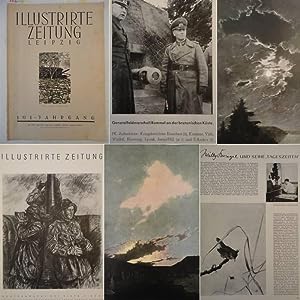
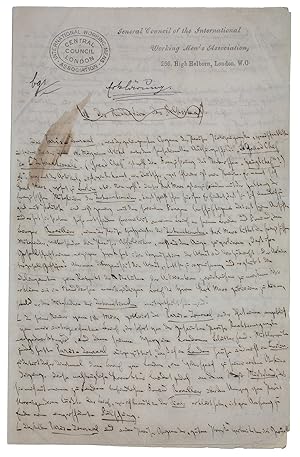
![Bild des Verkäufers für Die Ritterlich und lobwürdig reiß [.] Sagend von den landen, Egypto, Syria, von beiden Arabia Persia, India und Ethiopia, von den gestalten, sitten, und dero menschen leben und glauben. zum Verkauf von Antiquariat INLIBRIS Gilhofer Nfg. GmbH](https://pictures.abebooks.com/inventory/md/md11801165564.jpg)
![Bild des Verkäufers für [Bird's-eye View of Amsterdam, first printed in Amsterdam in 1544, 3rd edition, 1553 or later]. Text in the cartouche in the upper right: De vermaerde koopstadt/van Amstelredam/ geconterfeyt met alle sijn Wateren/ Bruggen / Straten /Kercken /Kloo=steren/ Huysen /Toorens /Poorten ende Mueren / ende omleggende situatie /gemackt ter eeren K.M. ende oock den Eersamen Raedt der selver Stadt/ ende allen Liefhebbern der Konste/etc. Wtgegeven by Cornelis Anthonizoon Schilder/ met Octroye der K.M. onsen ghenadighsten Heere/ van't selfde niet te moghen nae-drucken noch verkoopen binnen den tijdt van ses Jaren lanck gheduerende /ende ghedateert van den Jahre duysent vijf-hondert drie-en-veertigh / op seeckere penen int selfde Octroye begrepen / op dat hem een yegelijck voor schade verhoede mach. Dese afbeeldinghe vindtmen te koop in die vermaerde koopstadt van Amstelredam achter de Nieuwe Kerck by den voorsz Cornelis Anthoniszoon, Schilder inde Schrijvende handt. CMT 1544 (The famous merchant cit zum Verkauf von Daniel Crouch Rare Books Ltd](https://pictures.abebooks.com/inventory/md/md30793857159.jpg)


![Bild des Verkäufers für Die Ritterlich und lobwürdig reiß [.] Sagend von den landen, Egypto, Syria, von beiden Arabia Persia, India und Ethiopia, von den gestalten, sitten, und dero menschen leben und glauben. zum Verkauf von Antiquariat INLIBRIS Gilhofer Nfg. GmbH](https://pictures.abebooks.com/inventory/md/md30220668703.jpg)

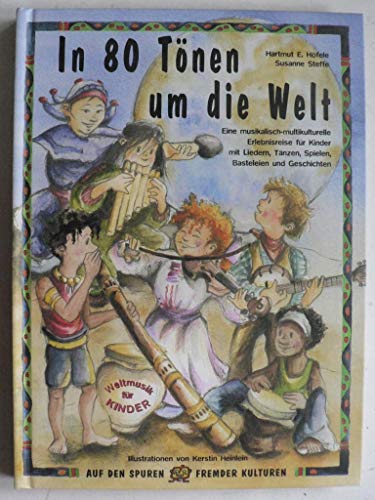

![Bild des Verkäufers für West-Indische Paskaert waer in de graden der breedde over wederzijden van de middellijn wassende so vergrooten dat die geproportioneert sijn tegen hunne nevenstaende graden de lengde. Vertonende behalve[n] Europaes zuydelijcste alle de zeekusten van Africa en America begrepen in 't Octroy bij de H.M.H. Staten Generael der vereenichde Nederl. verleent aende Generale West Indische Compagnie. Mitsgaders die van Peru en Chili inde groote Zuyd-Zee. zum Verkauf von Antiquariat INLIBRIS Gilhofer Nfg. GmbH](https://pictures.abebooks.com/inventory/md/md31041533701.jpg)
![Bild des Verkäufers für West-Indische Paskaert waer in de graden der breedde over wederzijden van de middellijn wassende so vergrooten dat die geproportioneert sijn tegen hunne nevenstaende graden de lengde. Vertonende behalve[n] Europaes zuydelijcste alle de zeekusten van Africa en America begrepen in 't Octroy bij de H.M.H. Staten Generael der vereenichde Nederl. verleent aende Generale West Indische Compagnie. Mitsgaders die van Peru en Chili inde groote Zuyd-Zee.Amsterdam, Pieter Goos, [ca. 1660]. Printed on vellum (ca. 80 x 98 cm) from one large copperplate engraving, partly coloured by a contemporary hand. zum Verkauf von Antiquariaat FORUM BV](https://pictures.abebooks.com/inventory/md/md30997380315.jpg)
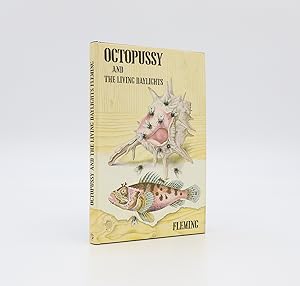
![Bild des Verkäufers für [Theuerdanck] Die geuerlicheiten und einsteils der geschichten des loblichen streytparen und hochberümbten helds und ritters herr Tewrdannckhs. zum Verkauf von Peter Harrington. ABA/ ILAB.](https://pictures.abebooks.com/inventory/md/md31789598056.jpg)
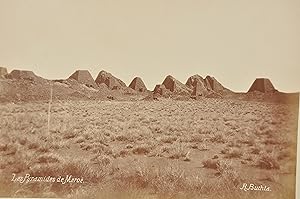
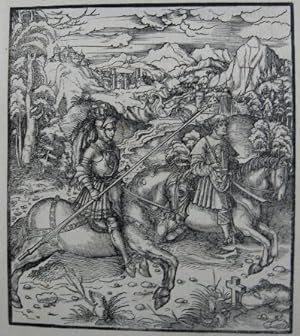
![Bild des Verkäufers für Der 18the Brumaire des Louis Napoleon [in: Die Revolution, eine Zeitschrift in zwanglosen Heften. Herausgegeben von J. Weydemeyer. Erstes Heft]. - [THE MOST IMPORTANT PROPOSITIONS IN THE MARXIST TEACHING ON THE STATE] zum Verkauf von Lynge & Søn ILAB-ABF](https://pictures.abebooks.com/inventory/md/md30602425307.jpg)
![Bild des Verkäufers für Odyssea, Das seind die aller zierlichsten und lustigsten vier vnd zwantzig buecher des eltisten kunstreichesten Vatters aller Poeten Homeri von der zehen jaerigen irrfart des weltweisen Kriechischen Fürstens Vlyssis beschriben unnd erst durch Maister . - [THE FIRST TRANSLATION OF THE ODYSSEY TO ANY MODERN LANGUAGE] zum Verkauf von Lynge & Søn ILAB-ABF](https://pictures.abebooks.com/inventory/md/md30869093938.jpg)
